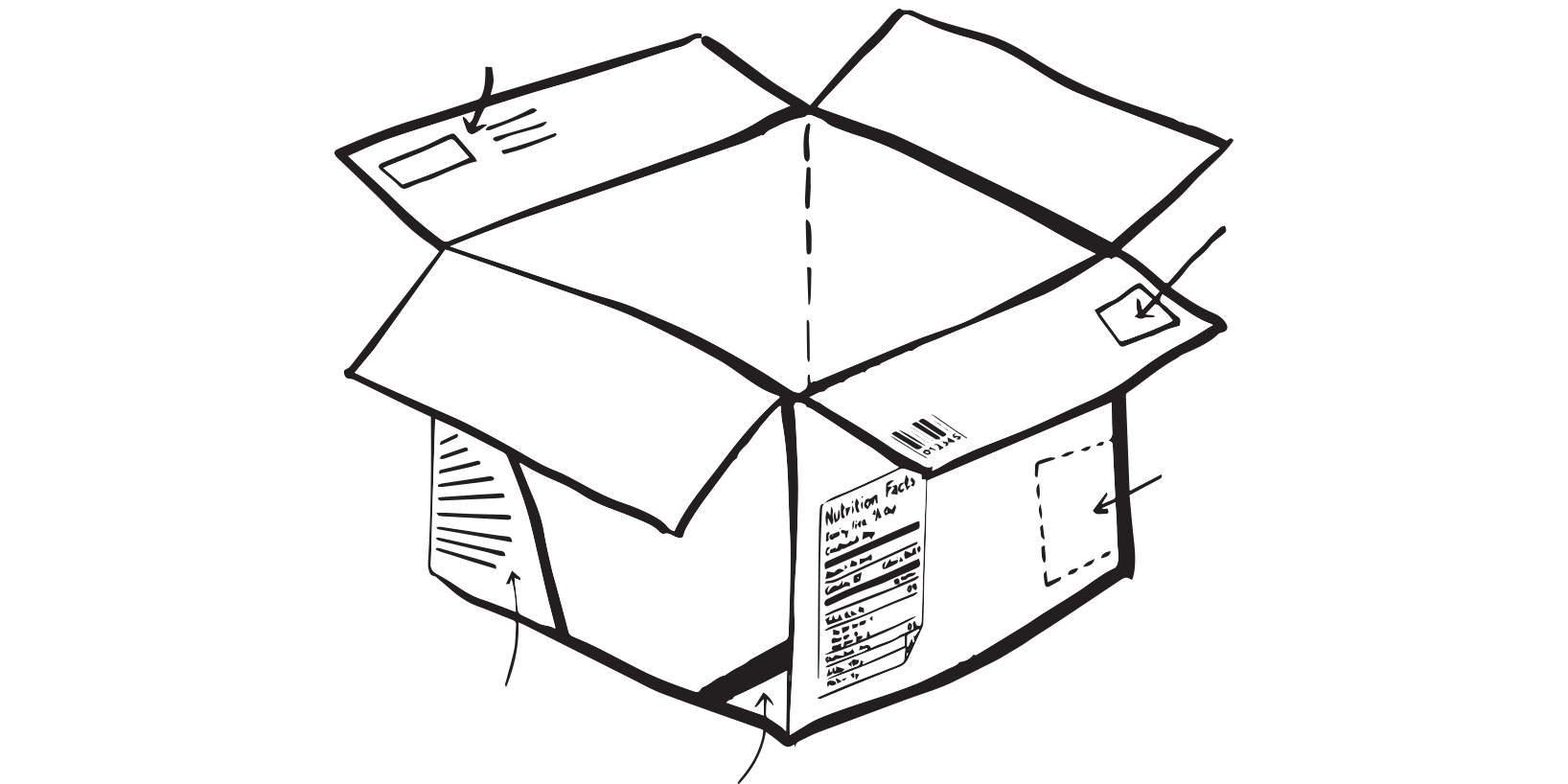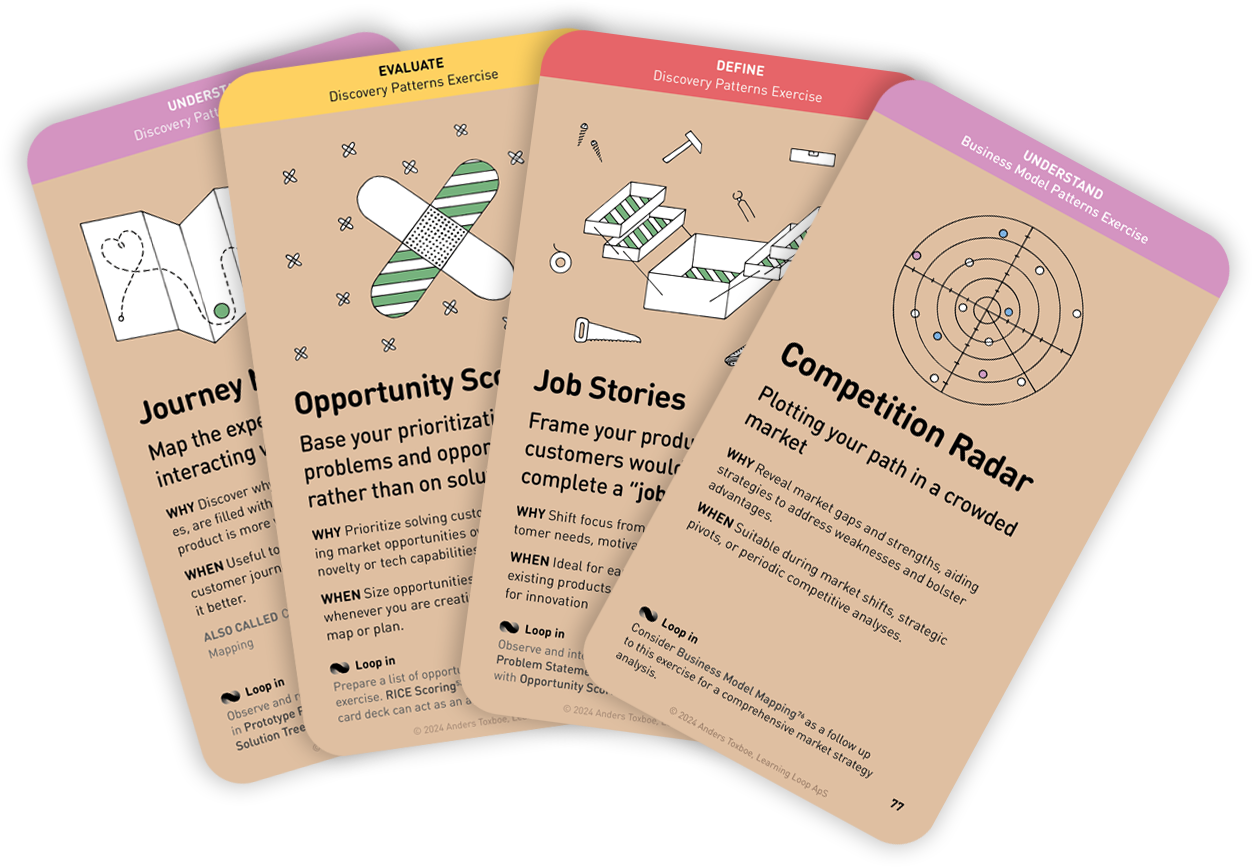
Why: Force team to discuss selling to end-customers and address appeal, features, benefits, and target market
When: As the team defines scope and features of a new product or concept and understanding how it will appeal to customers
Instructions for running this play
- Set up. Gather materials needed for creating physical or drawn boxes, such as cardboard boxes, craft paper, markers, stickers, tape, scissors. Have some sample boxes (e.g., cereal boxes, gift boxes, toy boxes) on hand for inspiration.
- Introduce the exercise. Explain the purpose of the exercise: to turn ideas into something you can almost touch by imagining what your product would look like on a store shelf and explaining why people would want to buy it.
- Brainstorm discussion. Let participants discuss potential names, customers, features, or other significant details about the product or idea they’ll be packaging.
- Box creation. Divide participants into sub-groups and provide each with the necessary supplies. Allow them 30-40 minutes to create a box for their idea, imagining it on a retail shelf, ready for sale, and prepare a sales pitch of the box. Encourage them to consider aspects such as the product name, target audience, tagline, compelling features, benefits, and standout imagery.
- Sales Pitch. Once boxes are complete, each group presents their box. Timebox presentations for 3 minutes each. Encourage teams to “sell” their box by explaining its features and benefits.
- Voting and Prizes. Have groups vote on the best “sales pitch”. Consider offering prizes to the winning team.
- Reflection and Conclusion. If agreement and alignment are desired outcomes, discuss similarities and differences in the boxes and consider a second round for creating a shared box. If not, conclude the workshop by summarizing the key points and reminding participants of the importance of envisioning the end product.
Instructions for running this play
- Set up. Assemble the necessary items for building physical or sketched boxes, like cardboard boxes, craft paper, markers, stickers, tape, scissors. Have some example boxes (like cereal boxes, gift boxes, toy boxes) available for inspiration.
- Introduce the exercise. Share the goal of the activity, which is to transform concepts into tangible representations by imagining how your product might appear on a retail shelf and explaining the reasons it would appeal to customers.
- Initial brainstorming session. Encourage participants to discuss potential names, customers, features, or other significant details about the product or idea they’ll be packaging.
- First sprint: Box Creation. Segment participants into smaller groups and distribute the required supplies. Grant them 30-40 minutes to craft a box for their idea, imagining it as a retail product ready for sale. Motivate them to contemplate aspects such as product name, target audience, tagline, captivating features, benefits, and standout visuals.
- Feedback Session. Before moving to the sales pitch, conduct a peer feedback session. Allow each group to present their box and receive constructive feedback from the other teams. Timebox this step for about 2 minutes per group.
- Second Sprint:Refining Box and Preparing Sales Pitch. Based on the feedback received, give the teams another 15-20 minutes to refine their product box and prepare a persuasive sales pitch.
- Sales Pitch. Once the revised boxes are ready, each group presents their refined box and their sales pitch. Timebox presentations for 3 minutes each. Inspire teams to “sell” their box by outlining its features and benefits.
- Voting and Rewards. Have teams vote on the most compelling “sales pitch”. Consider giving prizes to the victorious team.
- Reflection and Conclusion. Discuss the similarities and differences in the boxes if alignment is a desired outcome, and consider a second round for creating a consolidated box. If not, conclude the workshop by summarizing the key learnings and reminding participants of the value of visualizing the final product.
Tips to perfect this play
Master and adapt the play to fit your context and needs.
Tip: Separate creation and separation
Consider breaking creation and presention steps into two separate sprints to incorporate a feedback step.
Tip: Pitch the box
Encourage sales pitches to focus on benefits over features.
Tip: Customer collaboration
Consider designing the box in collaboration with customres
A collection of workshop exercises that will help you ditch dull meetings and facilitate with confidence. It will help you master the design process and have more productive time with your team. The card deck will be ready for purchase in the end of 2026 and is now undergoing rigorous testing.
Reserve your deck!- Gamestorming: A Playbook for Innovators, Rulebreakers, and Changemakers by Dave Gray
- The Product Box: make your ideas tangible & your workshop engaging! (2023 update)
- The Product Box
- Design The Box; a fun exercise to generate insights and ideas for your product and help by Christiaan Verwijs
- WRKSHP.tools
- NYT Product Discovery Activity Guide

